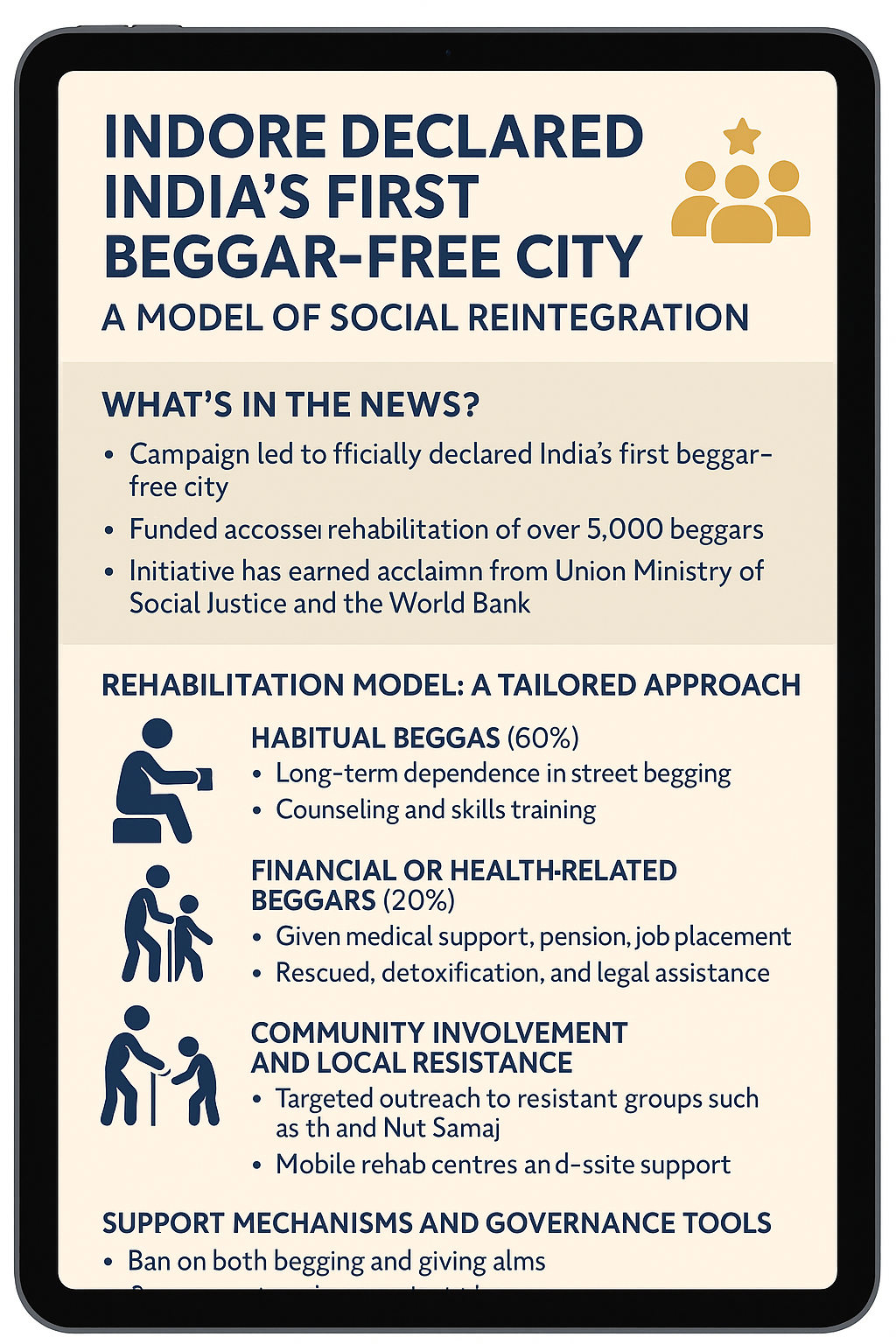
📅 May 7, 2025, Post 15: Assets of 21 Judges Published by SC | When the Robe Turned to Glass: Supreme Court’s Quiet Mirror of Accountability | Mains Essay | Target IAS-26 MCQs Attached: A complete Package, Dear Aspirants!
When the Robe Turned to Glass: Supreme Court’s Quiet Mirror of Accountability

NATIONAL HERO — PETAL 015
🗓️ Date: May 7, 2025
⚖️ Thematic Focus: Judicial Ethics | Transparency | RTI and Accountability
🌿 Intro Whisper:
Justice must not only be done—it must be seen in the mirror of public trust, clear and unclouded.
🔍 Key Highlights:
- Supreme Court Judges’ Asset Disclosure:
21 judges, including the Chief Justice of India, publicly disclosed their financial assets and liabilities on the SC website, reaffirming the court’s ethical stance amid recent scrutiny. - Backdrop of Allegations:
This development follows the internal inquiry into Justice Yashwant Varma, where a panel found credibility in allegations of cash being discovered at his Delhi residence following a fire (March 14). Justice Varma was later transferred and took oath at Allahabad High Court on April 5. - Judicial Panel:
The panel included:- Justice Sheel Nagu (Punjab & Haryana HC)
- Justice G S Sandhawalia (Himachal Pradesh HC)
- Justice Anu Sivaraman (Karnataka HC)
- Judicial Asset Declaration Timeline:
- 🗓️ 1997: CJI J.S. Verma initiates internal declaration
- 🗓️ 2009: SC allows voluntary public disclosure
- 🗓️ 2009: Delhi HC rules such data falls under RTI Act, Section 2(f)
- 🗓️ 2019: Constitution Bench confirms CJI is a public authority
- 🗓️ 2025: First systematic public declaration of SC judges’ assets on the official website
- Constitutional Significance:
- Transparency: Strengthens public perception of judicial integrity
- Constitutional Morality: Echoes principles of the Preamble and Directive Principles of State Policy (Part IV)
- Trust in Judiciary: Essential in times of political or social instability
- Judiciary as a Stabilising Institution:
- Public disclosures enhance credibility, and reflect the judiciary’s evolving self-regulatory ethics.
📘 GS Paper Mapping:
- GS Paper 2: Structure, functioning and transparency of the judiciary; RTI Act, 2005
- GS Paper 4 (Ethics): Integrity, public accountability, and ethical governance
- Essay: “The Robe and the Mirror: Judicial Ethics in the Age of Transparency”
🌠 Closing Thought:
In the silence of the courtroom, it is not the gavel but the clarity of conscience that echoes longest. When judges open their books, democracy breathes easier.
High Quality Mains Essay For Practice :
Word Limit 1000-1200
Judiciary and the Mirror of Integrity: Public Trust through Transparency
Introduction
In the grand architecture of democracy, the judiciary stands as the keystone—upholding rights, restraining excesses, and interpreting the Constitution. Yet, its power rests not on the sword or purse, but on something more fragile and profound: public trust. When 21 judges of the Supreme Court of India, including the Chief Justice, publicly disclosed their assets, it marked a quiet but momentous shift toward judicial transparency—an institutional act of integrity.
In an era of public skepticism and rising demands for accountability, the disclosure is both symbol and substance. It signals a maturing democracy where even the highest constitutional functionaries voluntarily place themselves under ethical scrutiny. The judiciary is showing that justice must be not only done but be seen to be done—clear and unquestionable, like a judge’s robe turned into glass.
The Context and the Catalyst
The asset declaration came in the wake of a delicate crisis—allegations of unexplained cash discovered at the official residence of Justice Yashwant Varma following a fire incident. Though the matter was handled internally through a three-judge panel, it reignited public interest in judicial ethics and accountability.
Justice Varma was soon transferred and took oath as a judge at the Allahabad High Court. The Chief Justice of India (CJI), in an unusual yet thoughtful gesture, prefaced the internal report with the option for the concerned judge to resign. Notably, he also discussed the conclusions informally with colleagues—an act that demonstrated leadership, collegiality, and transparency.
While the asset publication was not officially linked to this case, its timing underscored the judiciary’s understanding that trust must be earned, not demanded.
Judicial Accountability: The Missing Pillar
India’s democracy rests on three pillars—executive, legislature, and judiciary. While elected representatives and civil servants are subject to statutory mechanisms of scrutiny, the judiciary has largely remained immune to binding public disclosure norms.
Unlike ministers or IAS officers, judges are not legally required to declare their assets under any law. Their accountability rests on internal codes of conduct, conventions, and resolutions. This lack of statutory obligation makes the voluntary disclosures even more significant.
Over the years, several events paved the way for this milestone:
- 1997: CJI J.S. Verma initiated the first Full Court resolution recommending asset declarations to the Chief Justice.
- 2009: A Full Court decided that judges may voluntarily disclose assets on the Supreme Court website.
- 2009: Delhi High Court ruled that asset declarations are “information” under RTI Act, making them accessible to the public.
- 2019: Constitution Bench ruled that the CJI is a public authority under the RTI Act.
- 2025: For the first time, Supreme Court judges proactively disclose assets and familial financial ties on the official website.
This evolution—from reluctance to openness—shows the court’s willingness to align with the constitutional principle of transparency.
The Constitutional Imperative: Morality in Action
The Preamble of the Indian Constitution speaks of justice, equality, and integrity. Part IV (Directive Principles of State Policy), though non-justiciable, lays down the moral framework for governance. Public accountability—especially of powerful institutions—is part of this moral architecture.
Asset disclosure by judges:
- Reinforces constitutional morality
- Symbolizes commitment to the people
- Upholds ethical responsibility in public office
- Counters elite detachment from societal concerns
In a country where courts routinely demand transparency from the executive and legislature, this act ensures the judiciary leads by example.
Transparency vs. Privacy: Striking the Balance
Critics often argue that judges are entitled to privacy, and asset disclosures might expose them or their families to risk. While this concern is valid, it must be balanced against the larger interest of institutional trust.
The Supreme Court’s decision to publish assets, including family holdings, with due safeguards, shows that privacy and transparency are not mutually exclusive. The format and language of the disclosures respect individual dignity while fulfilling the duty of openness.
In fact, the 2019 judgment (CJI as public authority) emphasized that “transparency strengthens institutions, not weakens them.”
Why Trust in Judiciary Matters
The judiciary, unlike political institutions, has no direct democratic mandate. Its legitimacy is earned through conduct—fairness, consistency, and impartiality. In times of political polarization or constitutional uncertainty, the judiciary becomes the final stabilizer.
A trusted judiciary ensures:
- Rule of law over rule of personality
- Continuity of constitutional values amid political change
- Access to justice for the common citizen
- Resolution of constitutional crises with moral authority
Any erosion of public confidence in the judiciary can lead to institutional fragility, street justice, or majoritarian excesses.
The Road Ahead: A Culture of Disclosure
This step should not be a one-off event but the beginning of institutional culture. Some recommendations include:
- Annual Asset Disclosures for all judges with archival access.
- Extension to High Courts and Subordinate Judiciary.
- Code of Ethics with Enforceability for the Higher Judiciary.
- Transparent Appointment & Transfer Processes, especially for sensitive cases.
- Use of Technology for Real-Time Scrutiny of disclosures.
Judicial independence should not mean immunity from public standards, but freedom to uphold them courageously.
Conclusion
In declaring their assets, India’s highest judges have lifted the curtain that often shields the powerful. The act may seem modest on paper, but it reverberates with symbolic strength—of an institution willing to look into the mirror and say, “We are accountable too.”
Trust in the judiciary is the oxygen of constitutional democracy. As India enters a complex era shaped by AI, climate crises, and political fragmentation, its courts must remain ethical sanctuaries. This gesture is a step toward that sanctity.
Quote to End
“Power without transparency becomes tyranny; justice without integrity becomes hypocrisy. But when robes turn to glass, even silence earns trust.” — IAS Monk
Target IAS-26: Daily MCQs :
📌 Prelims Practice MCQs
Topic:
MCQ 1: Type-1 — “How many of the above statements are correct?”
Consider the following statements regarding judicial asset declaration in India:
1. Judges of the Supreme Court are legally bound under the RTI Act to declare their assets publicly.
2. The Supreme Court began publishing judges’ assets on its official website in 2025.
3. The Constitution Bench has ruled that the Chief Justice of India is a “public authority” under the RTI Act.
4. Asset declarations help promote constitutional morality and public trust in the judiciary.
How many of the above statements are correct?
A) Only two
B) Only three
C) All four
D) Only one
🌀 Didn’t get it? Click here (▸) for the Correct Answer & Explanation
✅ Correct Answer: B) Only three
🧠 Explanation:
•1) Incorrect – Judges are not legally bound by the RTI Act to declare assets; it’s a voluntary convention.
•2) Correct – In 2025, SC judges’ assets were officially published.
•3) Correct – Constitution Bench (2019) ruled that the CJI is a “public authority” under RTI.
•4) Correct – Transparency in the judiciary builds trust and upholds constitutional morality.
MCQ 2: Type-2 — Two-Statement Assertion
Consider the following statements about judicial accountability:
1. Asset declaration by judges is a legal requirement under the Judges (Inquiry) Act, 1968.
2. The first internal resolution on judicial asset declaration was passed in 1997 under Chief Justice J.S. Verma.
Which of the statements given above is/are correct?
A) Only 1 is correct
B) Only 2 is correct
C) Both are correct
D) Neither is correct
🌀 Didn’t get it? Click here (▸) for the Correct Answer & Explanation
✅ Correct Answer: B) Only 2 is correct
🧠 Explanation:
•1) Incorrect – There is no legal obligation under the Judges (Inquiry) Act for asset disclosure.
•2) Correct – The 1997 resolution was the first internal push for asset declarations by judges.
MCQ 3: Type-3 — “Which of the above statements is/are correct?”
With reference to transparency and judicial ethics, consider the following:
1. Delhi High Court in 2009 held that judges’ asset disclosures are “information” under RTI Act Section 2(f).
2. Judicial accountability is enshrined as a Directive Principle under Part IV of the Indian Constitution.
3. Transparency enhances judicial independence by eliminating public scrutiny.
4. Public asset declarations are an example of self-regulatory ethical practice.
Which of the above statements is/are correct?
A) 1, 2 and 4 only
B) 1, 3 and 4 only
C) 2 and 4 only
D) All four
🌀 Didn’t get it? Click here (▸) for the Correct Answer & Explanation
✅ Correct Answer: A) 1, 2 and 4 only
🧠 Explanation:
•1) Correct – Delhi HC in 2009 held disclosures fall under RTI Act.
•2) Correct – Judicial accountability aligns with Part IV (DPSP) principles.
•3) Incorrect – Transparency complements, not undermines, judicial independence.
•4) Correct – Asset disclosures reflect internal ethical self-governance.
MCQ 4: Type-4 — Direct Factual Question
Q. Who was the Chief Justice of India when the Supreme Court published the assets of 21 sitting judges in 2025?
A) Justice D.Y. Chandrachud
B) Justice Sanjiv Khanna
C) Justice U.U. Lalit
D) Justice N.V. Ramana
🌀 Didn’t get it? Click here (▸) for the Correct Answer & Explanation.
✅ Correct Answer: B) Justice Sanjiv Khanna
🧠 Explanation:
Justice Sanjiv Khanna, the current CJI in 2025, oversaw the proactive disclosure of judicial assets.


















